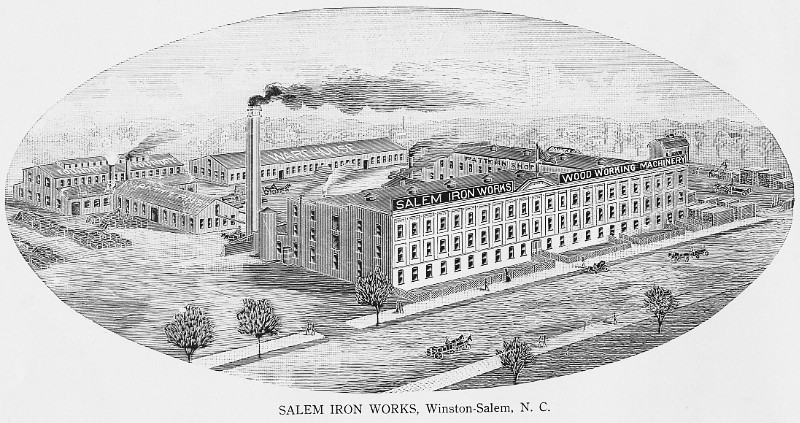
In 1873, Constantine Hege established a small foundry in Salem, the Salem Iron Works, operated by C. A. Hege & Co. That year he patented a cane-stripper, the following year he patented a rotary steam engine, and in 1875 he patented a plow. In 1877 he patented an improved sawmill head-block and that signalled a move into the manufacture of circular sawmills and other sawmill machinery.
In 1900 the business incorporated and Walter T. Spaugh became secretary and treasurer. When Hege died in 1914, Spaugh became vice president and in 1917 bought out the other investors and became president. The company continued until at least 1956.
Information Sources
- Undated flyer. The flyer pictured a "Hege Eureka" portable sawmill. We have only seen a couple of woodworking-related patent granted to someone named Hege: 1877 and 1881 patents to Constantine A. Hege of Salem, NC. Since this firm is also from Salem, there is a good chance that the Hege in the sawmill name is Constantine A.
- Report of a planer dated 1903.
- The NCpedia page on Constantine Hege provides some key dates, including the approximate starting date of his foundry.
- From History of North Carolina Volume V: North Carolina Buiography, 1919.
Walter T. Spaugh found his life work early, exercised the substantial virtues in him and those inherited from his ancestors, and step by step has advanced in the scale of industrial importance until he is now president of the Salem Iron Works.
He was born on his father ’s plantation in South Fork Township of Forsyth County, and completed his education in the Salem Boys’ School. He then began an earnest apprenticeship at the machinist’s trade with the Salem Iron Works. This apprenticeship was followed by a journeyman’s experience of a air months, and he was then admitted to partnership in the Salem Iron Works with Mr. Constantine Hege, founder of this local industry. In 1900 the business was incorporated, Mr. Spaugh becoming secretary and treasurer. On the death of Mr. Hege in 1914 Mr. Spaugh became vice president and treasurer, and in 1917 bought the outstanding stock of the company and after reorganization took the chief executive office as president. He is now at the head of one of the important industries in this section of North Carolina, and his own judgment and work have entered largely as factors in its growth and upbuilding.
- The American Cane Mill, ©2010, pgs. 248-249